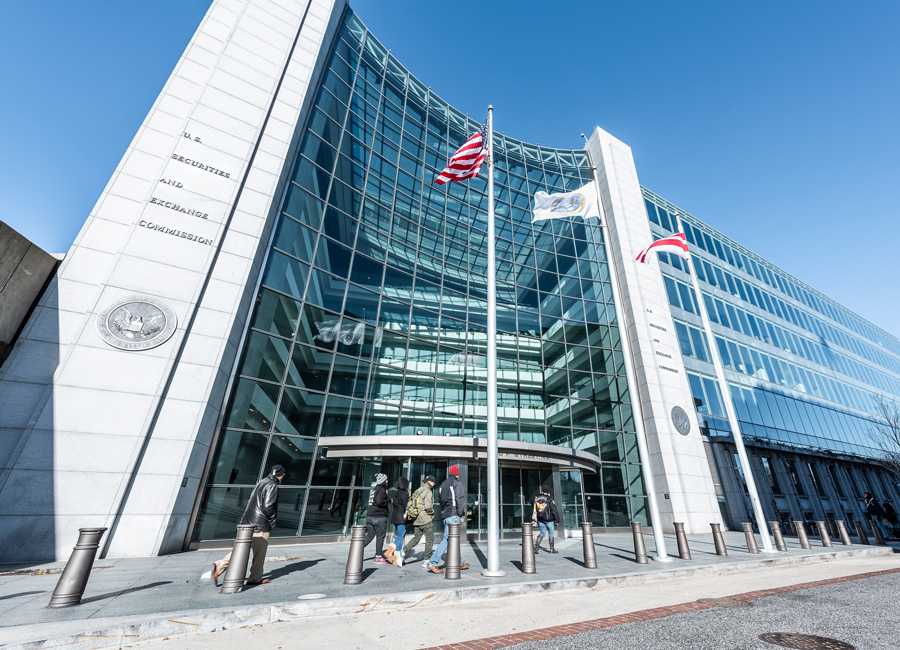

ESG investing has become impossible for regulators to ignore. Some $40 trillion of funds under management globally now apply ESG (environmental, social and corporate governance) factors to investment decisions. Three regulators that collectively oversee all publicly traded U.S. companies, stocks, bonds and derivatives markets, pension funds and retirement assets—the United States Securities and Exchange Commission (SEC), Commodities and Futures Trading Commission (CFTC), and the Department of Labor (DOL)—have all recently weighed in.
ESG risks and opportunities are quickly becoming bedrock principles in corporate strategies, policies, disclosures and shareholder communications and engagement. C-suites and their boards are looking at ESG issues through an investor lens, not just as a corporate social responsibility, legal compliance or reputational issue. Investor Relations teams report major upticks in ESG-related information requests. Investors and standards bodies like SASB and GRI are pressing for more unified and standardized reporting on material ESG factors for long-term value and risk-adjusted returns.
With the market moving fast, regulators are beginning to co-develop common practices and frameworks that have, until now, largely been left up to companies, shareholders and financial market participants. Proposed rules and recommendations issued this summer by the three agencies mark the early stages of a more active regulatory phase of ESG reporting and investing.
The SEC and CFTC have recognized the materiality of climate risk, human capital and other ESG issues for investors and the financial system. At the same time, the DOL has been roundly criticized by financial market participants for proposing rules they see as an attempt to thwart ESG investing.
SEC steps up on human capital disclosures, investors follow through on specifics
The SEC has been in dialog with markets for several years on ESG issues and already requires companies to disclose material risks, including climate risk, to investors.
In May, the SEC’s Investor Advisory Committee recommended creating an ESG disclosure framework, citing the patchwork approach to ESG disclosure globally, the lack of clear reporting obligations for U.S. companies, as well as the “plethora of ESG data providers, all with different standards and criteria.” A single standard—developed together with investors and public companies—would add clarity and uniformity to what constitutes material ESG information and preserve the strength and global relevance of U.S. capital markets and securities market regulation.
In August, the SEC acknowledged that human capital issues are material for investors by amending disclosure rules. SEC Chair Jay Clayton said he is “particularly supportive of the increased focus on human capital disclosures, which for various industries and companies can be an important driver of long-term value.” More disclosure will “allow investors to better understand and evaluate this company resource and to see through the eyes of management how this resource is managed.”
Since the SEC took a principles-based approach on human capital disclosure rules, the regulators are leaving it up to companies to decide what metrics and information disclosures are material for investors. Over time, common practices and more standardization could emerge, with corporate leaders setting the pace for their industries. While critics would have liked a more prescriptive approach with standardized metrics as a requirement, the SEC’s move will spark a period where companies will start giving out more information, especially if they are hearing from shareholders and ESG research firms on specific data they want to see.
That spark has already been ignited. One day following the new SEC rules, the chief investment officer of $3 trillion index fund behemoth State Street Global Advisors, which is a top shareholder of every major company, issued a letter to corporate boards of directors making SSGA’s expectations very clear.
Starting in 2021, SSGA will ask companies to “articulate their risks, goals and strategy as related to racial and ethnic diversity.” To this end, the letter asks companies to provide specific communications to shareholders on the role diversity plays in their human capital management practices and long-term strategy; report on their diversity goals, progress and metrics of the diversity of the firm’s global employee base and board; detail racial and ethnic representation at the board level and explain how it relates to their business and stakeholders; and explain the corporate governance role of the board in their oversight of diversity and inclusion issues.
Practices may also emerge from private sector efforts. The Big Four global accounting firms this year proposed a core set of common metrics and disclosures so that C-suites and investors can evaluate financial and non-financial metrics together. The Sustainability Accounting Standards Board (SASB) and the Global Reporting Initiative (GRI) are collaborating to align their ESG reporting frameworks.
CFTC issues major report and recommendations on managing climate risk for the financial system
In September, the CFTC issued a nearly 200-page report, Managing Climate Risk for the U.S. Financial System. Its 53 recommendations are a call to action to put a price on climate risks and enable financial innovations that transition key industries to a sustainable future.
The New York Times noted that the report and recommendations were requested by all five CFTC commissioners appointed by President Trump. The 34 members of the CFTC Climate-Related Market Risk Subcommittee are a who’s who of financial institutions and corporations. The result is a first-of-its-kind report from a U.S. government entity on climatic financial risk.
The report identifies mispricing of risk as a major problem that causes capital to flow in the wrong direction, concluding that “financial markets will only channel resources efficiently towards reducing climate risk if an economy-wide price on carbon is in place.” The key takeaway: “Regulators should recognize that the financial system can itself be a catalyst for investments that accelerate economic resilience and the transition to a net-zero emissions economy.”
This comes in the wake of unprecedented action by private actors to promote disclosures that are consistent and comparable, such as the Taskforce on Climate-related Financial Disclosures headed by former SEC Chair Mary Schapiro; and the Business Roundtable’s Addressing Climate Change report issued this September, which endorses putting a price on carbon.
DOL proposed restrictions on ESG investing run into heavy opposition from financial institutions
Numerous studies point to better earnings and stock price performance by companies that score high on ESG performance metrics, and lower performance and higher volatility among laggards. Others point to ESG as being neutral: investors do not need to sacrifice returns if they choose to employ ESG investing strategies.
Nevertheless, the DOL issued proposed rules and initiated an investigation this summer that could restrict the use of ESG funds and strategies in U.S. pension funds and 401(k) retirement plans. The DOL’s reasoning is that “ESG factors often are touted for reasons that are non-pecuniary—to address social welfare more broadly, rather than maximize returns,” as Labor Secretary Eugene Scalia explained in the Wall Street Journal.
The reaction from asset managers, financial advisors and the public has been almost unanimously negative. In addition to asserting the link between ESG and financial performance, they claim the DOL is going far beyond existing fiduciary requirements applied to other investments. According to analysis by Morningstar and the Forum for Sustainable and Responsible Investment, of the 8,737 comments submitted to the DOL, 95 percent were in opposition to the proposal. Seven trillion dollar investment firm Blackrock’s 17-page comment is a good distillation of ESG investing strategies and performance and critiques of DOL’s proposed regulatory restrictions.
Some good could come of this debate, and the inconsistencies in ESG investing products and ratings ought to be addressed. If anything, the insistence on fiduciary duty should drive more investors to step up their stewardship efforts, analyzing material ESG factors and engaging companies and boards to improve their overall strategies and performance.
The common thread for the three regulatory agencies is that change is being driven by market forces. Major financial institutions and companies are moving fast to bring ESG disclosure and investing into the mainstream. They are looking to regulators for more uniformity, and because these trends are market-driven, they are likely to continue in some form regardless of who wins the White House.


